Sanwa PM33a Handleiding
Sanwa
Multimeter
PM33a
Bekijk gratis de handleiding van Sanwa PM33a (1 pagina’s), behorend tot de categorie Multimeter. Deze gids werd als nuttig beoordeeld door 48 mensen en kreeg gemiddeld 4.9 sterren uit 24.5 reviews. Heb je een vraag over Sanwa PM33a of wil je andere gebruikers van dit product iets vragen? Stel een vraag
Pagina 1/1

1. This section is very important for safety. Read and
understand the following instructions fully and maintain
your instrument properly.
2. The instrument must be calibrated and inspected at
least once a year to maintain its safety and accuracy.
1) Applications: Testing the quality of diodes.
2) How to use
1 Set the function switch to the / / position.Ω
2 Select “ ” by pressing the SELECT button.
3 Apply the black test pins to the cathode of the diode
and the red test pin to the anode.
4 Make sure that the display shows a diode forward
voltage drop.
5 After replacing the red and black test pins, connect
the red test pin to the cathode of the diode and
connect the black test pin to the anode.
6 Make sure display is the same as when the test lead
is not connected (OL indication).
Note:
Successful co mpletion of st eps 4 and 5
indicates tha t there is no problem with the
diode.
7 After measurement, release the red and black test
pins from the object measured.
1) Applications: Measuring the capacitance of low leakage
condenser such as film condenser.
2) How to use
1 Set the function switch to the position.
2 Apply the red and black test pins to a conductor to
measure.
3 Read the value on the display.
4 After measurement, release the red and black test
pins from the object measured.
3 Re p la ce b ot h of t he t wo b at t er ie s in t h e b a t t e ry
compartment with new ones.
4 Place the battery compartment cover and tighten the
fixing screws.
• About the batteries when shipped from the factory
The bat teries incorporated when shipped from t he
factory are monitor batteries, so their service life may be
shorter than that of brand-new batteries. A monitor
battery is a type of battery used to check the functions of
and performance of the product.
1 R e m o v e t h e t w o f i x i n g s c r e w s f r o m t h e b a t t e r y
compartment cover.
2 Slide the batt ery compartment cover downward t o
remove it.
1) Applications: Measuring the resistance of resistors and
circuits.
2) Measurement procedure
1 Set the function switch to the / / position.Ω
2 Apply the red and black test pins to an object to
measure.
3 The reading is shown in the display.
4 After measurement, release the red and black test
pins from the object measured.
When the position of this instrument is changed
during DCA measurement, the display may fluctuate
due to geomagnetism.
Because the AC sensoring system of this instrument
is an average value system, an error in the measured
value will occur wit h waveforms other than sine
waves.
Accu r a cy is g ua r a n t ee d in A C A mea su reme n t
between 40 ~ 400 Hz.
Measurement of an inverter power supply circuit may
cause a malfunction.
The open voltage of the input terminals is almost the
same as the battery voltage.
①
②⑤ ⑤
③
④
Extension cord
If measurement is likely to be influenced by noise,
shield the object to measure with negative potential
( C O M ) . I f a f i n g e r t o u c h e s a t e s t p i n d u r i n g
measurement, measurement will be influenced by
the resistance in the human body, and that results in
measurement error.
Open circuit voltage: Approx. 0.78 V in 660 Ω range
Approx. 1.2 V in other range
Resistance cannot be measured when voltage is
present.
Never apply voltage to the input terminals.
WARNING
Max. rating input value
DC 600.0 V
AC 600.0 V
1. Make sure that no low battery indication appear in the
display.
2. Never use meter if the meter or test leads are damaged
or broken.
3. Check continuity of test leads.
WARNING
DC/AC 100 A
Voltage input
prohibited
1.
Correct measurement may not be possible in areas
exposed to strong magnetic fields generated by electrical
equipment such as a transformer or large current path,
electromagnetic waves generated by wireless equipment,
or areas where electrostatic charges are generated.
2.
This instrument may malfunction or may not be able to
take correct measurements with special waveforms such
as those produced by an inverter circuit.
Display in REL measurement
DC 3.000 V
DC 0.000 V
DC -2.000 V
100 A DC/AC
①
③
⑤
Conductor to
be measured
(electrical wire)
Current
direction
④
②
Center
position
marking
Barrier
Clamp Sensor
Current direction
marking
Barrier
1) Applications
DCV: Vo l t a g e o f t h e b a t t e r y a n d D C c i r c u i t a r e
measured.
ACV: Sine wave AC voltage, such as lighting voltage, is
measured.
2) Measurement procedure
1 Set the function switch to the “V” position and select
either DCV or ACV with the SELECT button.
2 Apply the red and black test pins to the circuit to
measure.
• For measurement of DCV, apply the black test pin to
the negative potential side of the circuit to measure
and the red test pin to the positive potential side.
• For measurement of ACV, apply the red and black
test pins to the circuit to measure.
3 The reading of voltage is shown on the display.
4 After measurement, release the red and black test
pins from the object measured.
Readings are unstable when test leads are opened.
Accuracy is guaranteed in the case of sine wave.
The frequencies where accuracy is guaranteed in the
ACV measurement are 40 ~ 100 Hz in the 660 mV
range and 40 ~ 400 Hz in other ranges.
Although the terminals to be measured are short-
circuited in the AC 660 mV and AC 6.6 V ranges, up
to 10 counts may remain in the AC 660 mV range
and up to 7 counts may remain in the AC 6.6 V
range.
Measurement of an inverter power supply circuit may
cause a malfunction.
Max. rating input value
66.00 kHz
(600 Vrms or less)
Measurement range
660.0 Hz, 6.600 kHz, 66.00 kHz
20.0 % ~ 80.0 % at 50/60 Hz
Function
Hz/DUTY
600 V DC/AC
To ensure the meter is used safely, be sure to observe the
instructions when using the instrument.
1.
Never use meter on the electric circuits that Exceed 3.6 kVA.
2.
Pay special attention when measuring voltages of AC 33
Vrms (46.7 V peak) or DC 70 V or more to avoid injury.
3. The clamp sensor provided with this instrument is
exclusively for low-voltage use. Perform clamp current
measurement with 600 V or less lines.
4. Never apply an input signal exceeding the maximum
rating input value.
5.
Never use meter for measuring the line connected with
equipment (i.e. motors) that generates induced or surge
voltage since it may exceed the maximum allowable voltage.
6.
Never use meter if the meter or test leads are damaged or broken.
7. Never use uncased meter.
8.
Always keep your fingers behind the finger guards on the probe
1. The clamp sensor of this instrument is exclusively for low
voltage. Perform the clamp current measurement on a
line with 600 V or less.
2. Do not turn the function switch during measurement.
3. During measurement, do not hold the clamp sensor at
any point beyond the barrier.
4. To prevent electric shock, be sure to store the test probe
and test lead in their designated storage compartments.
1. Never apply an input signal exceeding the maximum
rating input value.
2. Do not turn the function switch during measurement.
3. Do not hold the test probe by a section closer to the test
pin side behind the finger guard.
Never apply voltage to the input terminals.
Never apply voltage to the input terminals.
When high resistance is measured, the displayed value
may fluctuate due to external induction.
Hz / DUTY
Ω/ /
Voltage and current
input prohibited
DCA · ACA
[1]
SAFETY PRECAUTIONS Before use, read the following safety precautions.
This instruction manual explains how to safely use your new
PM33a digital multimeter with clamp sensor. Before use, please
read this manual thoroughly. After reading it, keep it together
with the product so you can refer to it when necessary.
Using this product in ways not specified in this manual may
damage its protection function.
Instructions given under the “ WARNING” and “ CAUTION”
headings must be followed to prevent accidental burns or
electrical shock.
1-1 Explanation of Warning Symbols
The meanings of the symbols used in this manual and on the
product are as follows.
Very important instruction for safe use.
The warning messages are intended to prevent accidents
to operating personnel such as burn and electrical shock.
The caution messages are intended to prevent damage to
the instrument.
: Direct current (DC) : Ground 〜:
Alternating current (AC)
: Capacitance : Resistance : FrequencyΩ Hz
: Continuity : Duty cycleDUTY
: Diode
:
Double insulation (Protection Class II)
: Plus input (Red)
: Minus input (Black)
1-2 Warning Instruction for Safe Use
WARNING
WARNING
Function Input
terminals
Maximum rating
input value
Maximum overload
protection input
1-3 Overload Protections
DCV · ACV DC/AC 600 V
Clamp
sensor
section
additional functions, as well as enabling measurement of small type
communication equipment, electrical home appliances, lighting
voltage and batteries of various types.
A current clamp sensor is also provided that can measure up to 100
A DC/AC, allowing measurement of the electric consumption of
equipment that uses an automotive battery or AC power supply. This
can be done by simply clamping a single line of electrical wiring in
the device being measured.
2-2 Features
•
The inst r ume n t is compa c t a nd ligh t weigh t a nd h a s b e e n
designed in accordance with the safety standard EN 61010-1.
•
Provided with a current clamp sensor that can measure up to 100
A DC/AC.
•
The clamp sensor has a thin U-shaped sensor design that is 7 mm
thick. Also because the inclination angle of the sensor is variable
between 0 ° and 180 °, the display section of the main unit can be
adjusted to an easy-to-view angle.
•
Provided with RANGE hold, MAX/MIN hold, REL/ZERO and DATA
HOLD functions that are convenient for measurement.
•
When the Hz/DUTY measurement function is used during the
activation of the ACV/ACA function, the frequency and duty ratio
of the signals that are being measured can also be measured.
•
Provided with an Auto Power Off function (approx. 30 min.), which
can also be canceled.
•
The storable sections of the test leads and test probes use an
elastomeric material that is easy to wind and store.
[2] APPLICATION AND FEATURES
2-1 Applications
This instrument is a pocket-type digital multimeter with clamp sensor
designed for measurement of weak current circuits (CAT. II 600 V,
CAT. III 300 V). It plays an important role in circuitry analysis using
[7] AFTER-SALE SERVICE
7-1 Warranty and Provision
Sanwa offers comprehensive warranty services to its end-users and
to its product resellers. Under Sanwa’s general warranty policy, each
instrument is warranted to be free from defects in workmanship or
material under normal use for the period of one (1) year from the
date of purchase.
This warranty policy is valid within the country of purchase only, and
applied only to the product purchased from Sanwa authorized agent
or distributor.
Sanwa reserves the right to inspect all warranty claims to determine
the extent to which the warranty policy shall apply. This warranty
shall not apply to fuses, disposables batteries, or any product or
parts, which have been subject to one of the following causes:
1. A failure due to improper handling or use that deviates
from the instruction manual.
2. A failure due to inadequate repair or modification by
people other than Sanwa service personnel.
3. A failure due to causes not attributable to this product
such as fire, flood and other natural disaster.
4. Non-operation due to a discharged battery.
5. A failure or damage due to transportation, relocation or
dropping after the purchase.
7-2 Repair
Customers are asked to provide the following information when
requesting services:
1. Customer name, address, and contact information
2. Description of problem
3. Description of product configuration
4. Model Number
5. Product Serial Number
6. Proof of Date-of-Purchase
7. Where you purchased the product
Please contact Sanwa authorized agent / distributor /
service provider, listed in our website, in your country with
above information. An instrument sent to Sanwa / agent /
distributor without those information will be returned to the
customer.
Note:
1) Prior to requesting repair, please check the following:
• Ca pa cit y a nd insta llat ion polarit y of the built -in
batteries.
• Continuity of the test leads.
[8] SPECIFICATIONS
8-1 General Specifications
MEASUREMENT CATEGORY
CAT II: Primary electrical circuits in equipment connected to
an AC electrical outlet by a power cord.
CAT III: P r im a ry e le c t r ic a l ci rcu it s o f he a vy e q u ip me n t
connected directly to the distribut ion panel, a nd
feeders from the distribution panel to outlets.
8-2 Measurement Range and Accuracy
Accuracy assurance range: 23 ± 5 °C & less than 80 % R.H.
No Condensation
Function Range Accuracy
Input impedance
Remarks
DCV
DC Voltage
660.0 mV
±(1.1 %rdg+3dgt)
≥100 MΩ
6.600 V
±(0.7 %rdg+3dgt)
Approx. 11 MΩ
66.00 V
±(0.8 %rdg+3dgt)
Approx. 10 MΩ
600.0 VΩ
±(1.1 %rdg+3dgt)
ACV
AC Voltage
660.0 mV
±(1.6 %rdg+10dgt)
≥100 MΩ
• Accuracy-
guaranteed
range: 40 ~
100 Hz
6.600 V
±(1.4 %rdg+6dgt)
Approx. 11 MΩ
• Accuracy-
guaranteed
range: 40 ~
400 Hz
• Accuracy in
the case of
sin wave
66.00 V
Approx. 10 MΩ
600.0 V
Resistance
Ω
660.0
Ω
±(1.5 %rdg+7dgt)
• Open voltage: Approx. 1.2 V
6.600 k
Ω
±(0.9 %rdg+3dgt)
• Open voltage: Approx. 0.78 V
• The measuring current
changes according to the
resistance of the resistor to
measure.
66.00 k
Ω
660.0 k
Ω
6.600 MΩ
±(2.0 %rdg+3dgt)
66.0 MΩ
±(4.0 %rdg+3dgt)
Testing
Diode • Open voltage: Almost battery voltage
Checking
Continuity
• Buzzer sounds at less than 30 Ω
• Open voltage: Approx. 1.2 V
Capacitance
6.600 nF
±(5.0 %rdg+10dgt)
• Accuracy was measured
after canceling display value
by the REL function.
66.00 nF
660.0 nF
6.600 μF
66.00 μF
660.0 μF
6.600 mF
±(7.0 %rdg+10dgt)
66.00 mF
Hz
Frequency
660.0 Hz
±(0.5 %rdg+3dgt)
• Measurement range: 20 Hz
~ 66 kHz
• Accuracy with input voltage
sensitivity of 10 ~ 600 Vrms
sin wave AC
6.600 kHz
66.00 kHz
• 50/60 Hz rectangular wave,
accuracy at 10 ~ 60 Vpp
DUTY 20.0 ~
80.0 %
±(0.5 %rdg+5dgt)
DCA
Direct
Current
100.0 A
±(2.0 %rdg+5dgt)
• Accuracy was measured
after canceling display value
by the ZERO set function.
ACA
Alternating
Current
100.0 A
±(2.0 %rdg+5dgt)
• Accuracy-guaranteed
range: 40 ~ 400 Hz
• Accuracy in the case of sin
wave
rdg: reading dgt: digits
Note: Correct measurement may not be possible in areas
exposed to st rong ma gnet ic fields generat ed by
electrical equipment such as a transformer or large
current path, electromagnetic waves generated by
wireless equipment, or area s where elect rostat ic
charges are generated.
Accuracy calculation
Ex.) Measurement of DC voltage (DCmV)
Display value: 100.0 mV
Range accuracy: 660 mV range … ± (1.1 %rdg±3dgt)
Error: ± (100.0 mV x 1.1 %±3dgt) = ±1.4
mV
True value: 100.0 mV ± 1.4 mV (in a range of
98.6 ~ 101.4 mV)
Note: 3dgt in the 660 mV range corresponds to 0.3 mV.
Specifications and external appearance of the product
described above may be revised for modified without
prior notice.
2) Repair during the warranty period:
The failed meter will be repaired in accordance with the
conditions stipulated in “7-1 Warranty and Provision”.
3) Repair after the warranty period has expired:
In some cases, repair and transportation cost may
become higher than the price of the product. Please
contact Sanwa authorized agent / service provider in
advance. The minimum retent ion period of service
functional parts is 6 years after the discontinuation of
manufacture. This retention period is the repair warranty
period. Please note, however, if such functional parts
become unavailable for reasons of discontinuation of
manufacture, etc., the retention period may become
shorter accordingly.
4) Precautions when sending the product to be repaired
To e n s u r e t h e s a f e t y o f t h e p r o d u c t d u r i n g
transportation, place the product in a box that is larger
than the product 5 times or more in volume and fill
cushion materials fully and then clearly mark “Repair
Product Enclosed” on the box surface. The cost of
sending and returning the product shall be borne by
the customer.
7-3 SANWA Website
http://www.sanwa-meter.co.jp
E-mail: exp_sales@sanwa-meter.co.jp
5-3 Frequency/DUTY Measurements (Hz / %)
5-8 Clamp Current Measurement (CLAMP A)
6-4 Storage
5-4 Resistance Measurement ( )Ω
5-6 Testing Diodes ( )
5-7 Capacitance Measurement ( )
Note: AC voltage is regulated by rms, values of sinusoidal wave.
(Red)
(Black)
[3] NAME OF COMPONENT UNITS
3-1 Multimeter
Display
MAX/MIN
button
Winding
directions
of test leads
Hz/DUTY
button
REL/ZERO
button
DATA HOLD
button
RANGE
button
SELECT
button
Power
switch &
Function
switch
Auto range mode
Diode test
Data hold operation
DC
measurement
AC
measurement
Negative
polarity
REL
measurement
Auto power off
Low battery indication
Decimal points
Numerical indication Measurement
units
Continuity
check MAX/MIN
mode
ZERO set
When canceling an operation, do not turn the function
switch during measurement.
[4] DESCRIPTION OF FUNCTIONS
4-1 Power Switch & Function Switch (All Functions):
Turn this switch to turn the power ON and OFF and to select
the measurement function.
4-2 SELECT Button (V · / / · CLAMP A positions):Ω
As this button is pressed, the function switches in the order of
the arrows ( ) as shown below.
• V position: AC voltage ( ) DC voltage ( ) AC voltage
( )
• Ω Ω/ / position: Resistance measurement ( ) Continuity
check ( ) Diode test ( ) Resistance measurement (Ω)
• CLAMP A position: AC current ( ) DC current ( ) AC
current ( )
4-3 RANGE Button (DCV · ACV · · · Functions)Ω
Press this button to engage the manual mode and fix the
range (extinguished ).
When the manual mode is engaged, each press of this button
cha nges t he ra nge. Select a n a ppropria t e range while
confirming the unit and the position of the decimal point on
the display. To restore the auto range, keep this button
depressed for more than 1 second (lit ).
T h i s b u t t o n c a n n o t b e u s e d w h e n i n H z / D U T Y
measurement.
4-4 MAX/MIN Button
(DCV · ACV · · · · · DCA · ACA Functions):Ω
Press this button to enter the MAX/MIN mode. As this button
is pressed, the measurement range switches in the order of
the arrows ( ) as shown below.
• MAX value indication (lit ) MIN value indication (lit )
Current measurement value indication (blinking )
MAX value indication (lit )
• MAX value indication:
Displays the maximum value of the values measured since
the engagement of the MAX/MIN mode.
•
MIN value indication:
Displays the minimum value of the values measured since the
engagement of the MAX/MIN mode.
• Current measurement value indication:
Holds in memory the maximum and minimum values while
displaying the current measurement value. Press this button to
confirm the maximum and minimum values by switching
between the MAX and MIN value indications.
To d is enga ge t h e MAX / MIN mo d e, keep t h is b ut t on
depressed for more than 1 second.
When the function or range is switched, the MAX/MIN mode
will be canceled.
4-5 Hz/DUTY Button (ACV · ACA Functions):
P r e s s t h i s b u t t o n t o sw i t c h t h e m o d e t o H z / D U T Y
measurement. Each time this button is pressed when the ACV
or ACA function is selected, the mode switches in the order of
the arrows ( ) as shown below.
ACV or ACA measurement Hz measurement DUTY
measurement ACV or ACA measurement.
4-6 REL/ZERO Button
(DCV · ACV · · · · · DCA · ACA Functions):Ω
Press this button to enter the REL measurement mode when
the DCV, ACV, , , , , or ACA function is activated Ω
(lit ).
The measurement range will be fixed, and the displayed
value will be set to zero using the input value at the time of
pressing the button as the reference value. To cancel the REL
measurement, press this button again.
Pressing this button in the DCA mode sets the displayed
value to ZERO (lit ).
The value at the time the button is pressed will be canceled,
and the display will show 0.0 A.
To deactivate the ZERO set function, press the button again
and keep it depressed for more than 1 second.
Ex.) Display after the REL/ZERO button is pressed during
DC 3.000 V input
Wh e n t h e f u n c t i o n o r r a n g e i s s w i t c h e d , t h e R E L
measurement or ZERO set will be canceled.
Max. rating input value
66.0 MΩ
Measurement range
660.0 Ω, 6.600 k , 66.00 kΩ Ω,
660.0 k , 6.600 M , 66.0 MΩ Ω Ω
Function
Ω
1) Applications: Measuring the frequency and duty of any
circuit.
2) Measurement procedure
1 Set the function switch at the V position and press
the SELECT button to select ACV.
2 Press Hz/DUTY button to select the frequency (Hz)
measurement or DUTY ratio measurement.
3 Apply the red and black test pins to a conductor to
measure.
4 Read the value on the display.
5 After measurement, release the red and black test
pins from the object measured.
When the input terminal is not connected, the display
ma y f lu ct u a t e a nd b e u n st a b le . T h is i s n o t a
malfunction.
The frequency measurement range is 20 Hz ~ 66
kHz. The input sensitivity with sine wave alternating
current is 10 ~ 600 Vrms.
Measurement of an inverter power supply circuit may
cause a malfunction.
Measurement with DC-coupled input is not possible.
When the 6.600 nF or 66.00 nF range is used, use the
REL mode to set the values that rema in on t he
display to “0” (cancelled) before the measurement is
performed.
Readings are unstable because of stray capacitance
in test leads or noise.
④⑤ ⑤
③
②
①
④
⑥
①
③
⑥ ⑥
⑤
Diode
Cathode Anode
②
③
①
④ ④
Capacitor
②
①④
②
③
③④ ④
②
Resistor
①
and the clamp sensor barrier when making measurements.
9.
Be sure to disconnect the test pins from the circuit when
changing the function.
10.
Before starting measurement, make sure that the function
a n d r a n g e a r e p r o p e r l y s e t in a c c o r d a n c e w i t h t h e
measurement.
11.
Never use meter with wet hands or in a damp environment.
12.
Ne v e r op e n t he ins t r ument ca se excep t when r epla cing
batteries. Do not attempt any alteration of original specifications.
13.
To ensure safety and maintain accuracy, calibrate and
check the instrument at least once a year.
14.
The instrument is for indoor use only.
Measurement range
660.0 mV, 6.600 V, 66.00 V, 600.0 V
660.0 mV, 6.600 V, 66.00 V, 600.0 V
Function
DCV
ACV
1. Never apply an input signal exceeding the maximum
rating input value.
2. Be sure to disconnect the test pins from the circuit when
changing the function.
3. Always keep your fingers behind the finger guards on
the probe when making measurements.
[5] MEASUREMENT PROCEDURE
5-1 Start-Up Inspection
START
No
damaged
Damaged
Main unit
and test leads
damaged?
Check continuity
of test leads.
Stop using it and
have it repaired.
①Set the function at
“ ”.
②Short the red and
black test pins.
The buzzer
sounds?
Yes
No
No problem. Start
measurement.
Check
①
②
Note:
If there is no display, the batteries may be exhausted.
5-2 Voltage Measurement
4-7 DATA HOLD Button (All Functions)
When this button is pressed, the will be lit in the display and
the value displayed at that time will be maintained. The
display will stay the same even if the measurement input
changes. Pressing this button again will cancel the DATA
HOLD mode and restore the measurement mode.
When the function or range is switched, the DATA HOLD
mode will be canceled.
4-8 Auto Power Off (APO):
The power and display will be turned off automatically when
no switch or button operation is made for about 30 minutes
after the power was turned on.
When a button is pressed or the function switch is turned
during measurement, the time until the Auto Power Off will be
extended an additional 30 minutes. To wake up from the Auto
Power Off mode, press the button again. When returned, the
value at the time of the Auto Power Off will be displayed using
the DATA HOLD mode. To disable this function, t urn the
funct ion swit ch while pressing a ny but ton (except t he
SELECT or DATA HOLD button) to turn on the power ( lit ).
When the Auto Power Off mode is engaged, the is lit in
the display.
Although power consumption in the Auto Power Off mode
the is less than 1/100 of that of the turned-on status, be sure
to set the power switch to OFF as soon as measurement is
complete.
4-9 Low Battery Indication
When the built-in batteries are exhausted and the battery
voltage drops below about 2.3 V, the will appear in the
display. If this icon is lit, replace the batteries with new ones
(two at the same time).
Actual input value
DC 6.000 V
DC 3.000 V
DC 1.000 V
③
①
④ ④
④ ④
②
Battery
DCV
measurement
ACV
measurement
Outlet
Never apply voltage to the input terminals.
5-5 Checking Continuity ( )
1) Applications: Checking the continuity of wiring and
selecting wires.
2) How to use
1 Set the function switch to the / / position.Ω
2 Select “ ” by pressing the SELECT button.
3 Apply the red and black test pins t o a circuit or
conductor wire to measure.
4 The continuity can be judged by whether the buzzer
sounds or not.
5 After measurement, release the red and black test
pins from the object measured.
The buzzer sounds when the resistance of the circuit
to be measured is less than approx. 30 Ω.
The open circuit voltage between the input terminals
is approx. 0.78 V.
Measurement Double integral method
Display Max. 6600 count
Over ranging indication “OL” mark indication
Range selection Auto and manual ranges
Polarity selection Automatic selection (–
display only)
Low battery indication
Displayed when built-in
batteries are exhausted (to
2.3 V or less) with lit or
blinking in display
Sampling rate Approx. 3 times/sec
Current measurement system
CT clamp
Max. clamp conductor
diameter 10 mm
AC sensoring Average sensoring
Environmental condition
Operating altitude <2000 m,
indoor use, pollution degree 2
Accuracy-guaranteed
temperature/humidity range
23 ± 5 °C, <80 % RH (without
condensation)
Operating temperature/
humidity range
5 ~ 40 °C, <80 % RH (without
condensation)
Storage temperature/
humidity range
–10 ~ 50 °C, <80 % RH
(without condensation)
Power supply Two LR03 alkaline batteries
Auto power off Power off after approx. 30
minutes since last operation
Power consumption Approx. 7 mW TYP (at DCV)
Dimensions & mass
130 (
L
) x 75 (
W
) 19.9 (
D
) mm
(excluding protrusions),
approx. 160 g (including
batteries)
Test lead length Approx. 60 cm for both red
and black
Safety standard
EN61010-1, EN61010-2-030, EN61010-
2-033, EN61010-2-032 CAT. III 300 V,
CAT. II 600 V, EN61010-031
EMC directive, RoHS directive
IEC61326(EMC), EN50581(RoHS)
Accessories Instruction manual
3-2 Display
WARNING
WARNING
CAUTION
WARNING
WARNING
WARNING
WARNING
1. Discharge the capacitance before measurement.
2. This is not suitable for measurement of electrolytic
condenser such as a large leakage condenser.
3. It takes a while to measure large capacitance.
1. The measurable diameter of a conductor is 10 mm. Do
not force a cable with an outer diameter of more than 10
mm into the clamp sensor section. Also do not apply
external force to the clamp sensor section.
2. Make sure that the conductor to be measured is aligned
with the center of t he arrows on the clamp sensor.
Otherwise, a measurement error will result.
3. Do not let this instrument come near a conductor in
which la rge cu r rent f lo ws or pla ce it o n a st rong
magnet ic field. Such an environment ma y ca use a
c u r r e n t v a l u e t o b e d i s p l a y e d e v e n t h o u g h n o
measurement is made (an error may occur). Since the
clamp sensor of this instrument is a U-shaped open-type
sensor, it is more susceptible to such an environment
compared than a closed-type sensor.
1. The panel and the case are not resist ant t o volatile
solvent and must not be cleaned with thinner or alcohol.
2. The panel and the case are not resistant to heat. Do not
place the instrument near heat-generating devices (such
as a soldering iron).
3. Do not store the instrument, in a place where it may be
subjected to vibration or from where it may fall.
4. For storing the instrument, avoid hot, cold or humid
pl a c es o r p la c e s u n d er d i r e ct s un li g h t o r w h e r e
condensation is anticipated.
5. When t he i n st rument is n ot g oing t o b e use d fo r
extended time, be sure to remove the batteries.
CAUTION
CAUTION
CAUTION
Measurement range
6.600 nF, 66.00 nF, 660.0 nF,
6.600 μF, 66.00 μF, 660.0 μF
6.600 mF, 66.00 mF
Max. input rating value
66.00 mF
Function
Max. input rating value
DC 100.0 A
AC 100.0 A
Measurement range
DC 100.0 A
AC 100.0 A
Function
DCA
ACA
• ACA: No adjustment is necessary.
3 Align one line of the conductor to be measured with
the center of the arrows on the clamp sensor.
• DCA: Point the object to be measured in the same
direction as the current direction marking. If it is
pointed in the opposite direction, “–” will be
displayed.
• ACA: The cur rent direct ion of t he o bject t o b e
measured is irrelevant.
4 Read the measurement value in the display.
5 After measurement, remove the conductor from the
clamp sensor.
1) Applications
DCA: Measures the current consumption of devices
such as an automotive battery.
ACA: Measures the sine wave alternating current with
40 ~ 400 Hz frequency of power supply facilities.
2) Measurement procedure
1
Raise the clamp sensor from the rear of the main unit.
2 Set the function switch to the CLAMP A position,
and press the SELECT button to select DCA or ACA.
• DCA: Use the ZERO set function to set the display
value to “0.0 A” before measurement.
[6] MAINTENANCE
6-1 Maintenance and Inspection
1) Appearance
• Has the appearance been damaged by falling?
2) Test leads
• Is the test lead cord damaged?
• Is the core wire exposed at any place on the test
leads?
If the built-in fuse is blown, current measurement is
impossible. Make sure that the test leads are not cut,
referring to the section 5-1.
6-2 Calibration
The manufacturer may conduct calibration and inspection.
For more information, please contact your dealer.
WARNING
1. To a void elect ric shock, do not remove t he battery
comp a r t ment c ove r wh e n in put is a p plie d t o t he
measurement t ermina l a nd clamp sensor or when
measurement is being performed.
2. Be sure to confirm that the function switch is set to “OFF”
before replacing the batteries.
WARNING
Set the batteries with their polarities facing in the correct
directions.
CAUTION
6-3 Battery Replacement
CAUTION
Clamp
sensor
(when stored)
Battery
compartment
cover
Battery
compartment
cover fixing
screws
Test probe (red)
Test probe (black)
Test pins
Removable
test pin covers
When not
covered
Finger guards
Removable test pin covers
When not covered : CAT.Ⅱ 600 V
When covered : CAT. Ⅲ 300 V
Test Leads
− 3 −− 1 − − 2 −
− 7 −− 6 −− 5 −
− 11 −− 10 −− 9 −
− 4 −
− 8 −
− 12 −
− 13 −
− 17 −
− 21 −
− 14 −
− 18 −
− 22 −
− 15 −
− 19 −
− 23 −
− 16 −
− 20 −
− 24 −
Product specificaties
| Merk: | Sanwa |
| Categorie: | Multimeter |
| Model: | PM33a |
Heb je hulp nodig?
Als je hulp nodig hebt met Sanwa PM33a stel dan hieronder een vraag en andere gebruikers zullen je antwoorden
Handleiding Multimeter Sanwa
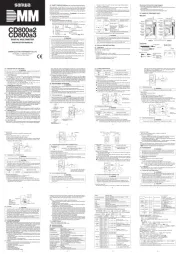
22 Juni 2025
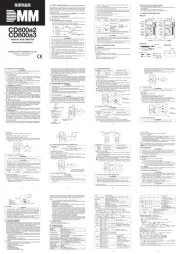
22 Juni 2025

7 December 2024

6 Januari 2024

6 Januari 2024

6 Januari 2024

6 Januari 2024

5 Januari 2024

5 Januari 2024

5 Januari 2024
Handleiding Multimeter
- Maxwell
- Elro
- Appa
- Greenlee
- Yato
- Kimo
- PeakTech
- Profile
- Horex
- Hubinont
- Megger
- Laserliner
- EMOS
- Somogyi
- Benning
Nieuwste handleidingen voor Multimeter
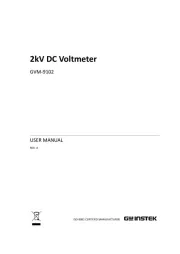
8 September 2025
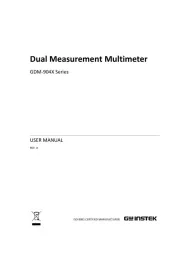
8 September 2025
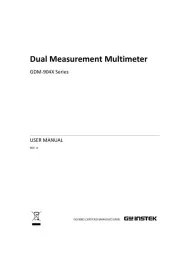
8 September 2025
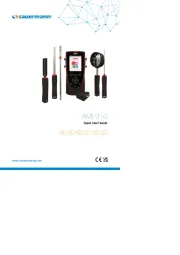
1 September 2025
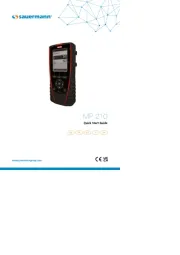
1 September 2025
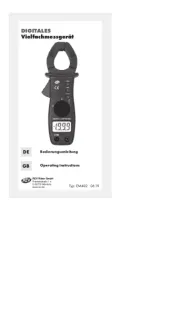
30 Augustus 2025
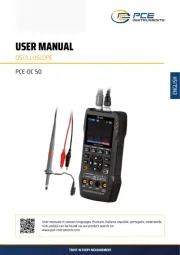
25 Augustus 2025
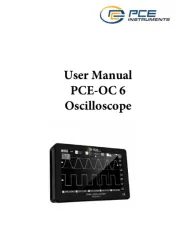
25 Augustus 2025
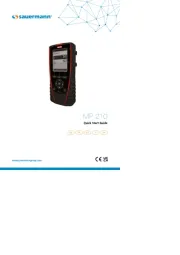
14 Augustus 2025
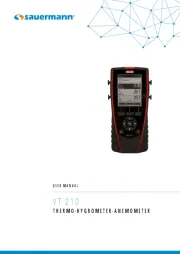
14 Augustus 2025